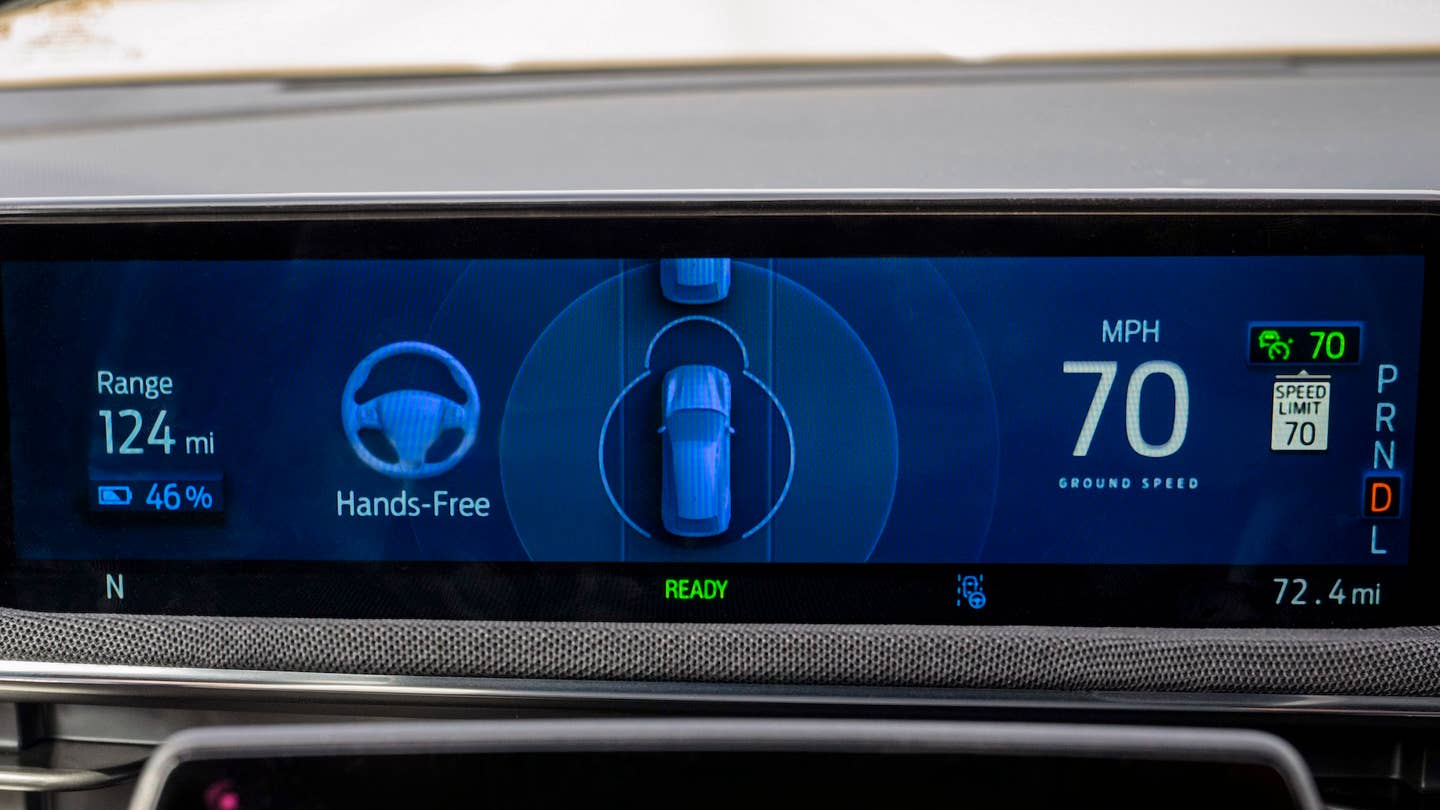Ford’s Hands-Free BlueCruise Was Active in Fatal Crash, Officials Say
This marks the first time a hands-free driving assist system has been observed in a road death.

The National Transportation Safety Board has found that Ford's hands-free highway driving assist BlueCruise was active during a fatal crash in February. Its investigation places one of the leading commercially available driving assist under scrutiny, and the outcome might jeopardize the future of automated driving tech in the United States.
The crash in question occurred on February 24 around 9:50 pm, when a Ford Mustang Mach-E traveling on Interstate 10 through San Antonio, TX rear-ended a stationary Honda CR-V. An NTSB statement reported by Reuters indicates a witness saw the Honda immobile in the road with its lights off before another vehicle impacted it, fatally injuring the Honda's driver. The NTSB has now reportedly confirmed that the Ford was being driven with BlueCruise active, adding that it's also investigating a second Mach-E crash in Philadelphia, PA where two were killed.
BlueCruise is Ford's marquee automated driving assist technology, which enables hands-free driving on some highways. Unlike some automakers, Ford doesn't tout this system as autonomous or "self-driving," and instructs drivers to keep their eyes on the road. The vehicle also enforces this with driver monitoring that deactivates the program if the driver is suspected of becoming distracted. BlueCruise is widely held to be one of the most capable such systems available to U.S. consumers, alongside General Motors' comparable Super Cruise—though GM's system is usable in more places.
This crash is significant because it's the first to involve a hands-free driving assist available to the public, rather than a driverless vehicle like GM's Cruise AVs, or a less capable hands-on system like Tesla's. BlueCruise's implication also highlights the failure of Ford's other passive safety technologies, such as Co-Pilot360, which features forward collision warning, automated emergency braking, and "evasive steering assist" that can aid a driver in swerving around an obstacle.
The NTSB's (and now NHTSA's) investigations are the latest in a string of automated driving scandals affecting multiple automakers, notably the aforementioned GM and Tesla. They put Ford in a tough spot, though it's unclear what the implications of the investigations could be. Even if Ford's able to write the crash off as driver misuse, it casts the company's other safety technologies in a poor light. If it's unable to pass the buck, similarly or less-capable systems may be called into question.
In the most extreme scenario, the investigations could result in sweeping restrictions or enforcement against automated driving technologies as a whole—though this seems the least likely outcome. In the wake of how GM handled its Cruise AV pedestrian collision last fall, and Tesla's recall for under-performing driver monitoring, the most likely outcome seems to be preemptive action by Ford to keep more severe consequences at bay. That could manifest as anything from temporarily restricting BlueCruise's availability to a software update that addresses a particular edge case, as happened with Waymo's comical one-two crashes in Arizona.
But once again, crashes like these underscore how far fully automated driving is from being a safe, commercially viable product—and calls into question whether it belongs on our roads at all in its current state.
Ford did not respond to an inquiry by time of publication.
Got a tip or question for the author? You can reach them here: james@thedrive.com
